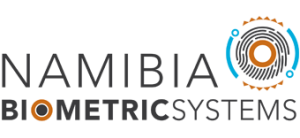Biometric Systems in Academia
The deployment of biometric systems has increased significantly in academic institution for cashless catering system, automated system for recording attendance and automated biometric library systems. Biometric systems in academic institutions circumvent the limitations of traditional systems. Biometric systems in academic institutions are safe, secure and easy to use without using any password or secret codes to remember. The traditional security systems in schools may inconvenient staff and students as the student/staffs have to carry card at all times as required for the usage of the library, meals and record attendance which may be useful information for financial sponsors. In addition, traditional security systems using smartcard technology may prove to be very expensive as cards may be lost or damaged and require replacement while biometric solutions can not be lost. What is the annual cost for lost or damaged smartcards to your institution? Research analysts at Biometric Research Laboratory (BRL) have outlined three examples of biometrics in academic institutions. BRL is the research group at Namibia Biometric Systems (NBS) which conducts applied research in the implementation of Biometrics based solutions for both governments and commercial applications.
Cashless catering system: Financial sponsors pay in advance for students’ meals, crediting the students’ accounts with the amount paid in. The student or staffs then use this credit to pay for their meals on campus. Students or staffs can be identified at the till by an automated biometric system, with the cost of their meal being deducted from the credit paid in their account. There are several advantages to cashless catering. Students or staffs do not need cash to pay for their meals, reducing the opportunity for theft. Such systems can also speed up service in canteens and dining rooms.
Automated Biometric attendance and registration: Students register using an automated biometric system at the entrance of each lecturer. Entrance time and exit time is registered per students. Such systems can save considerable time and effort in taking registers. In addition, there is no opportunity for students to register absent students by using their smartcards or signing for them. Biometric systems can also help prevent unauthorised access to academic institutions. Attendance data can be used to help assess the impact of truancy on performance allowing any necessary steps to be implemented rapidly. This is an essential tool in performance management.
School library automation: An automated biometric system identifies and records the student’s name and the book/items they have borrowed or are returning. Thus giving staff more time to focus on other critical issues.
More information on the implementation of biometrics based solutions can be requested from info.@namibiabiometricsystems.com.
